
Diwali Festival in India 2024 Festival of Lights
Diwali, also known as the Festival of Lights, is one of the most important festivals celebrated in India. It usually falls in October or November and lasts for five days, with each day having its own significance. Here’s a brief overview of the celebration:
Diwali, also known as the Festival of Lights, is one of the most important festivals celebrated in India. It usually falls in October or November and lasts for five days, with each day having its own significance. Here’s a brief overview of the celebration:
Diwali, also known as the Festival of Lights, is one of the most important festivals celebrated in India. It usually falls in October or November and lasts for five days, with each day having its own significance. Here’s a brief overview of the celebration:
Diwali, also known as the Festival of Lights, is one of the most important festivals celebrated in India. It usually falls in October or November and lasts for five days, with each day having its own significance. Here’s a brief overview of the celebration:
Diwali, also known as the Festival of Lights, is one of the most important festivals celebrated in India. It usually falls in October or November and lasts for five days, with each day having its own significance. Here’s a brief overview of the celebration:
Day 1: Dhanteras
People clean and decorate their homes, and purchase new utensils or gold as a sign of prosperity. This day marks the beginning of the festival.
Day 2: Naraka Chaturdashi (Choti Diwali)

Devotees wake up early and perform rituals to ward off negative energies. Many light lamps and burst firecrackers to celebrate the victory of good over evil.
Day 3: Diwali (Main Festival Day)
This is the most significant day. Families worship Lakshmi, the goddess of wealth, and Ganesha, the remover of obstacles. Homes are adorned with diyas (oil lamps) and rangoli (colorful patterns made on the floor). The night sky is filled with fireworks, and families gather for feasts and exchange sweets and gifts.
Day 4: Govardhan Puja
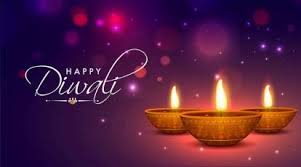
This day commemorates the lifting of Govardhan Hill by Lord Krishna to protect the villagers from torrential rains. People prepare a large feast and sometimes create a small mound of food as a symbolic representation of the hill.
Day 5: Bhai Dooj
This day celebrates the bond between brothers and sisters. Sisters pray for their brothers’ long life and well-being, while brothers give gifts in return.
Traditions and Customs
- Lighting Diyas: Symbolizes the victory of light over darkness.
- Fireworks: A major part of the celebration, adding joy and excitement.
- Sweets and Snacks: Families prepare and share various traditional sweets like ladoos, barfis, and more.
- Rangoli: Colorful designs made with powders or flower petals are created at entrances to welcome guests.
Regional Variations
Diwali is celebrated differently across regions in India. For example, in North India, it celebrates Lord Rama’s return to Ayodhya, while in South India, it marks the victory of Lord Krishna over Narakasura.
Diwali brings communities together, fostering a spirit of joy, love, and unity. It’s a time for reflection, gratitude, and celebration with loved ones.
Diwali is a feast for the senses, especially when it comes to food! Various traditional dishes and sweets are prepared and shared during the celebrations. Here are some popular foods enjoyed during Diwali:

Sweets
- Gulab Jamun: Soft, round balls made from milk solids, deep-fried, and soaked in sugar syrup flavored with cardamom or rosewater.
- Jalebi: Crisp, spiral-shaped sweets made from fermented batter, deep-fried, and dipped in sugar syrup.
- Ladoo: Round sweets made from various ingredients like chickpea flour (besan), semolina (rava), or coconut, often flavored with nuts and cardamom.
- Barfi: A dense, milk-based sweet that can be made with a variety of ingredients like khoya, coconut, or pistachios.
- Kaju Katli: A thin, diamond-shaped sweet made from cashew nuts and sugar, often garnished with edible silver foil.
Savory Snacks
- Samosa: Deep-fried pastries filled with spiced potatoes, peas, and sometimes meat, served with chutneys.
- Pakora: Vegetables or paneer coated in gram flour and deep-fried until crispy. They’re often enjoyed with tea.
- Chivda: A savory mixture of flattened rice, nuts, and spices, often enjoyed as a crunchy snack.
- Mathri: A flaky, spiced biscuit typically served with pickles and chutneys.

Main Dishes
- Biryani: A fragrant rice dish cooked with marinated meat or vegetables, flavored with spices and saffron.
- Paneer Tikka: Grilled chunks of marinated paneer, often served as an appetizer.
- Chole Bhature: Spicy chickpeas served with fluffy deep-fried bread.
- Dal Makhani: Creamy black lentils cooked with butter and spices, typically served with naan or rice.
Drinks
- Masala Chai: Spiced tea made with milk, tea leaves, and a blend of spices.
- Thandai: A refreshing drink made with milk, nuts, and spices, often enjoyed during festivals.
Regional Variations
Different regions in India have their own specialties, such as:
- Mysore Pak in South India
- Peda in Maharashtra
- Sandesh in West Bengal
Food plays a crucial role in Diwali celebrations, symbolizing love, joy, and the spirit of sharing with family and friends. Each dish carries its own significance, making the festival even more special.




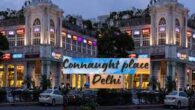
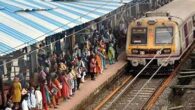
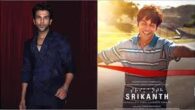

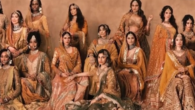

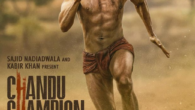

Leave a Reply